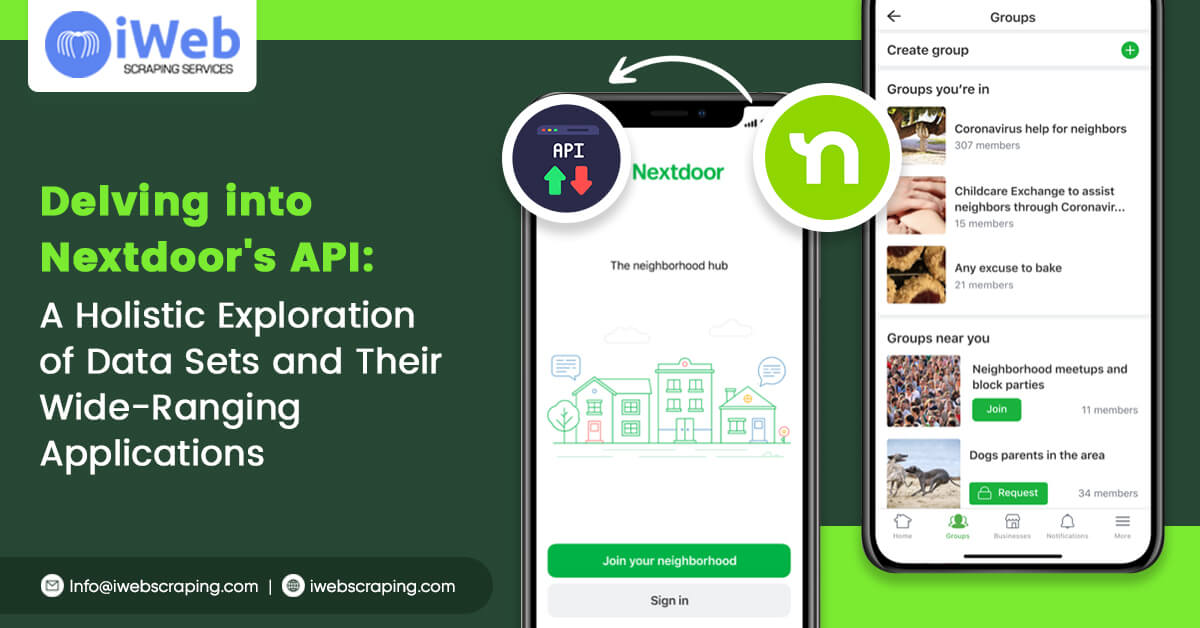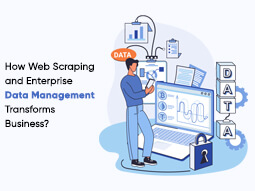Delving into Nextdoor's API: A Holistic Exploration of Data Sets and Their Wide-Ranging Applications

The advancements in tech, specifically the Internet, and the general connectedness of people worldwide have been a boon for companies and consumers alike. However, more and more cutting-edge advancements are being made in big data-driven tech companies. Much of this development is coming out of Silicon Valley, but it's clear that there are many opportunities throughout North America in this burgeoning field too.
In this post, we will explore Nextdoor's API in depth to understand how it can be used as a tool by both developers and consumers to get what they need while also keeping their personal information secure!
The Nextdoor API provides developers with various data sets that can be used for multiple purposes.
Overview of Nextdoor:
Launched in 2010, Nextdoor is a social networking site that helps communities with close-knit ties to connect and communicate. The company recently announced that it had surpassed 20 million platform members, indicating the Internet's hunger for more social interaction.
The core of Nextdoor is its neighborhoods. There are neighborhoods like these in any North American city, town, or village. Users within each neighborhood define how their neighborhood is run by creating a "neighborhood charter" that outlines the rules and regulations they want to abide by while using Nextdoor and suggestions they would like others to follow. It allows users to create a community that reflects their individual needs.
These neighborhoods are called "Nextdoor" for a reason: they are where people can open up about any concerns they have regarding their neighborhood without worrying about revealing their identity. It is an essential factor for people to consider as it caters to privacy concerns.
When someone wishes to share something about their neighborhood via Nextdoor or even visit one to find out more information, they click the "Share" button in the top-right corner of the screen. After this, they will send out a message to all of their neighbors, giving them a heads-up if they have something specific that needs attention.
Understanding Nextdoor's API
As mentioned, the nextdoor.com website allows people to create neighborhood sites to communicate more efficiently and effectively with their friends, relatives, neighbors, or colleagues. This is done through the use of Nextdoor's API.
The Explore API allows developers to use the data from users' profiles and neighborhood pages for personal and commercial applications. Nextdoor's API aims to provide a common platform for developers to build products by offering access to its user base's data whenever needed.
Using Nextdoor API, we can extract Nextdoor data sets and data types from a wide range of use cases.
In the interest of privacy, Nextdoor only allows us to retrieve the requested data. In other words, we are restricted regarding what we can access on Nextdoor's API. We must request the correct permissions from our account team to begin scraping. Furthermore, this constrains how much information we can access and at what level this information can be retrieved.
Extracting information using data scraping gives you in-depth information regarding the data set you request. This information allows us to focus on the core of our use case by understanding what we will and won't learn about our data set.
It's more efficient for a company to provide a unified access point for its customers. Thus, Nextdoor has conveniently provided one through its API. This approach can help companies create the right environment for customers.
Nextdoor Data Types & Data Sets:
Below is a list of the data sets found in Nextdoor's API.
The user profile data contains basic information about the Nextdoor user, such as their name, email address, phone number, physical address (where applicable), and more. This data can be used to track how many people view a particular neighborhood's page and message board topics. It can be accessed through the identified API.
The users' interests indicate what they like or dislike within their neighborhoods or specific pages on Nextdoor. Developers use these preferences to create unique applications focusing on this information and catering to consumers' needs. The user interests data can be accessed using the users' interest feature data in API calls.
1. Activities API
The activities API retrieves upcoming activities for a specific neighborhood or all of the neighborhoods in the Nextdoor network. Whenever someone creates an activity, as seen from their profile information, it appears on their Nextdoor neighborhood home page. These can also be found on relevant pages when clicking "Upcoming" in the top-right corner of any Nextdoor neighborhood home page. The valuable data returned includes event information such as a description, location, and approximate arrival time. It allows developers to create new applications that focus on this information and cater to the needs of Nextdoor members and consumers alike.
2. Neighbors API
Performing the same function as the activities API, the neighbors API scrapes data related to others who live or work in the neighborhood that a Nextdoor user is currently visiting. People can use this API to see who else is in their neighborhood or know about new neighbors. This data can be accessed through the neighbor's feature data.
3. Neighbors Similarity API
Applying a similar idea to its analogy with its neighbor's feature data, Nextdoor's Neighbors Similarity API allows one to compare two homes and see their similarities by returning links between them when they are compared. This information can be used in many ways, such as discovering people's preferences and creating a "social map" that depicts what people like and dislike.
4. Messenger API
The messenger API provides developers with a tool to permit their users to communicate directly with each other via their Nextdoor accounts while also keeping track of all of these conversations. It is done by using the messaging feature data in API calls, which allows users to create direct messages from one another. These messages are created when someone invites the "Share" button on the Nextdoor neighborhood pages. The information returned includes things like who was invited and the name of the activity that the user wishes others to join in on.
5. Groups API
Another aspect of the Nextdoor network that is easily accessible through its API is the groups feature. These social groups are people with similar interests and are often used to create a sense of community within a neighborhood. The groups API allows developers to extract all the information related to these groups, including the name, photo, description, and members list. This information can be used in a number of creative ways and could be an asset for new startups or apps looking for ways to draw in investors.
Nextdoor API Data Sets & their Application
The "Nextdoor" API is a relatively simple one. Here is a list of data sets that users can find within the Nextdoor API and what they are used for.
1. Events API
Developers can use the events API to create applications that provide information about local neighborhood events and activities. It provides them with valuable and relevant information on their neighborhood or for their specific application, which gives consumers more reasons to use the Nextdoor network in the first place. The data sets available include:
Upcoming Events: It Includes a list of events happening in your neighborhood right now, including their times and locations.
Content Views: A list of all events that were shown on the home page for your neighborhood.
Number of Attendees: How many people have signed up for an event?
Textual Descriptions: A list of event descriptors (what is being discussed at the meeting/event)
Time Until Start: How long before the meeting begins
Relevant links are also available to users whenever they view an event on Nextdoor. Through this, they can sign up for the event or share it with others. They can also make changes to the directory's content when necessary. They can comment on an event, send a message about it to other neighbors, and share it outside of Nextdoor.
2. Homepage API
The homepage serves as the hub of any Nextdoor neighborhood. Through this, consumers can view all kinds of helpful information in one place, such as upcoming events and messages that other users have sent them. It is essential for convenience and can be seen in section 4 of any Nextdoor homepage. Consumers can also share content with the network and find out what others communicate or interact with.
Conclusion:
There are a lot of benefits to having an API made available for developers to be able to access.
It allows businesses looking to create applications or utilize the Nextdoor network to do so quickly. By creating this API, people and companies on Nextdoor have a bigger target audience that they can use to generate new revenue without the overhead of directly targeting each user.
There are many ways that this consumer data can be used by consumers and businesses alike, and as such, it has the potential for significant growth within Nextdoor.




